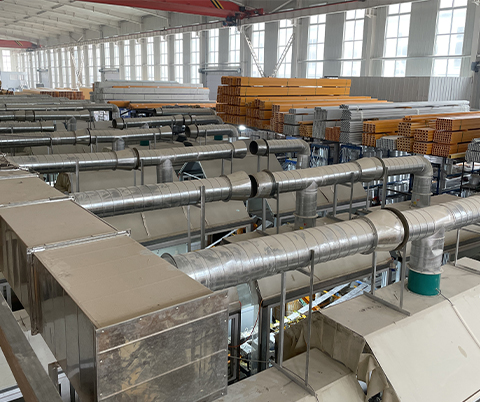loading...
- No. 9, Xingyuan South Street, Dongwaihuan Road, Zaoqiang County, Hengshui, Hebei, China
- admin@zjcomposites.com
- +86 15097380338
- Welcome to visit our website!
Fiber Reinforced Polymer Bars in Concrete Structures for Enhanced Durability and Strength
The Role of FRP Bars in Concrete Construction
Fiber Reinforced Polymer (FRP) bars have emerged as innovative reinforcement materials in concrete construction, offering significant advantages over traditional steel bars. This article explores the properties, benefits, challenges, and applications of FRP bars in reinforced concrete structures.
Understanding FRP Bars
FRP bars are composite materials made from fibers such as glass, aramid, or carbon, combined with a polymer matrix. These bars are lightweight, non-corrosive, and possess high tensile strength, making them ideal for various construction applications. Their unique properties enable the design of structures that meet modern engineering demands while enhancing durability.
Advantages of FRP Bars
1. Corrosion Resistance One of the most significant benefits of FRP bars is their resistance to corrosion. Unlike steel, FRP bars do not rust when exposed to moisture or aggressive chemicals, making them particularly beneficial in environments prone to corrosion, such as marine structures, bridges, and sewage treatment facilities. This attribute can prolong the lifespan of concrete structures and minimize maintenance costs.
2. Lightweight FRP bars are considerably lighter than traditional steel reinforcement. This characteristic simplifies transportation and handling during construction, ultimately reducing labor costs. Additionally, lighter materials can lead to lower overall structural weight, allowing for more flexibility in design.
3. High Strength-to-Weight Ratio Despite their lightweight nature, FRP bars exhibit a high tensile strength. This quality allows engineers to design slimmer and more efficient structural elements, which can be crucial in space-constrained environments or for aesthetic purposes.
4. Non-Magnetic and Non-Conductive FRP bars do not interfere with electromagnetic fields, making them suitable for applications in sensitive environments, such as hospitals and laboratories. Moreover, they are non-conductive, providing safety advantages in specific situations.
Challenges of FRP Bars
frp bars in concrete

Despite their numerous advantages, the use of FRP bars in concrete construction does come with some challenges
1. Higher Material Costs Currently, FRP bars are more expensive than traditional steel reinforcement. This upfront cost can deter some contractors and engineers from using them, especially in budget-sensitive projects.
2. Limited Track Record While the use of FRP bars has been gaining traction, their long-term performance in comparison to steel is still a subject of research. As a relatively new material in the construction industry, extensive long-term data on durability and behavior under various loads is needed.
3. Design Considerations The design codes and guidelines for FRP-reinforced concrete are still evolving. Engineers must have a thorough understanding of the material properties and behavior to design safe and efficient structures, which may require additional training and expertise.
Applications of FRP Bars
FRP bars have found a range of applications in concrete construction, particularly in scenarios where traditional steel reinforcement may be inadequate. Some notable uses include
- Bridges FRP bars improve the longevity of bridge decks, especially those exposed to harsh environmental conditions. - Industrial Structures In chemical plants and wastewater treatment facilities, FRP bars provide exceptional durability against corrosive substances. - Retrofitting and Repair FRP bars are increasingly used to strengthen existing concrete structures, enhancing their load-bearing capacity and extending their service life.
Conclusion
FRP bars represent a significant advancement in concrete reinforcement technology, offering unique benefits that meet the demands of modern construction challenges. While there are hurdles to overcome, the potential of FRP bars in promoting longer-lasting, more efficient, and corrosion-resistant structures makes them a material of choice for innovation in civil engineering. As research and development continue to progress, we can expect to see an even wider adoption of FRP bars in various construction projects globally.
-
The Rise of FRP Profiles: Strong, Lightweight, and Built to LastNewsJul.14,2025
-
SMC Panel Tanks: A Modern Water Storage Solution for All EnvironmentsNewsJul.14,2025
-
GRP Grating: A Modern Solution for Safe and Durable Access SystemsNewsJul.14,2025
-
Galvanized Steel Water Tanks: Durable, Reliable, and Ready for UseNewsJul.14,2025
-
FRP Mini Mesh Grating: The Safer, Smarter Flooring SolutionNewsJul.14,2025
-
Exploring FRP Vessels: Durable Solutions for Modern Fluid HandlingNewsJul.14,2025
-
GRP Structures: The Future of Lightweight, High-Performance EngineeringNewsJun.20,2025
